A Better Future for the Planet Earth
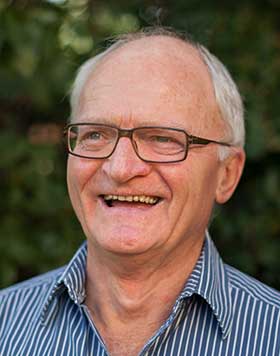
Prof. Brian Walker (Australia)
Ecologist
Hon. Research Fellow of the Commonwealth Scientific and Industrial Research Organization (CSIRO)
Hon. Professor, Australian National University
Born in Zimbabwe (September 23rd, 1940)
Childhood
Young to teenage
I was born and grew up in Zimbabwe (then Rhodesia), in the town of Salisbury, now Harare. My father was a flour-miller, a practical man who always encouraged me to do things I believed in, and to test myself as to whether I thought the thigs I did were the right things to do. My mother was very loving and told me to always look for the good in people. They both had a big influence on me.
At school my sports were rugby, swimming and water polo. My favourite subjects were science and English language, especially science. I was intrigued by how in nature things fitted together; how one thing related to another, why species occurred where they did. So there was always an urge to explore, to try to get an answer to something I didn’t really understand.
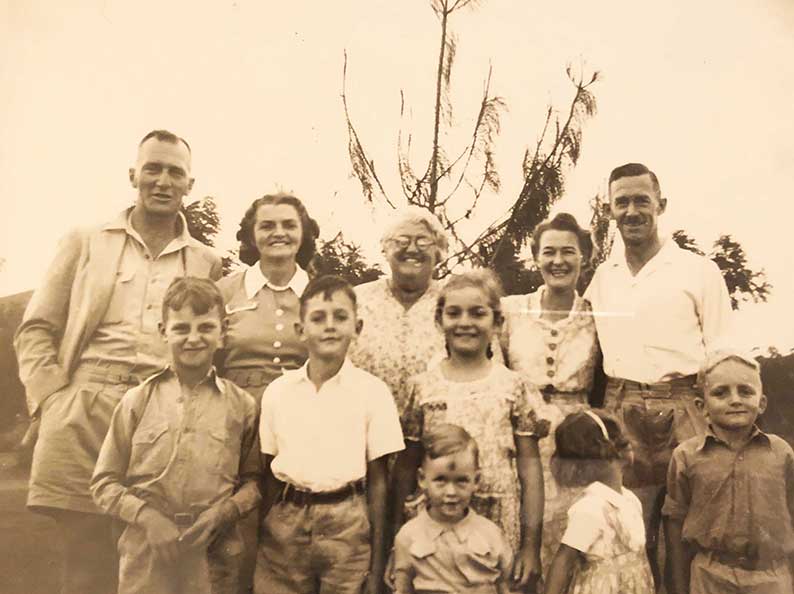
8 year-old Walker (far right) with parents (back row, left)
In the 1950s, Rhodesia was very peaceful. When I was a teenager, I used to ride my bicycle with my friends into the bush to go camping and looking for wildlife. I remember watching leopards at night, when they were hunting. Those experiences made me keen to do more with the ecology of African wildlife and the savannas they lived in. It was a very fortunate and wonderful childhood.
The road to becoming a ecologist
A student who studied agriculture to a professor who teaches ecology
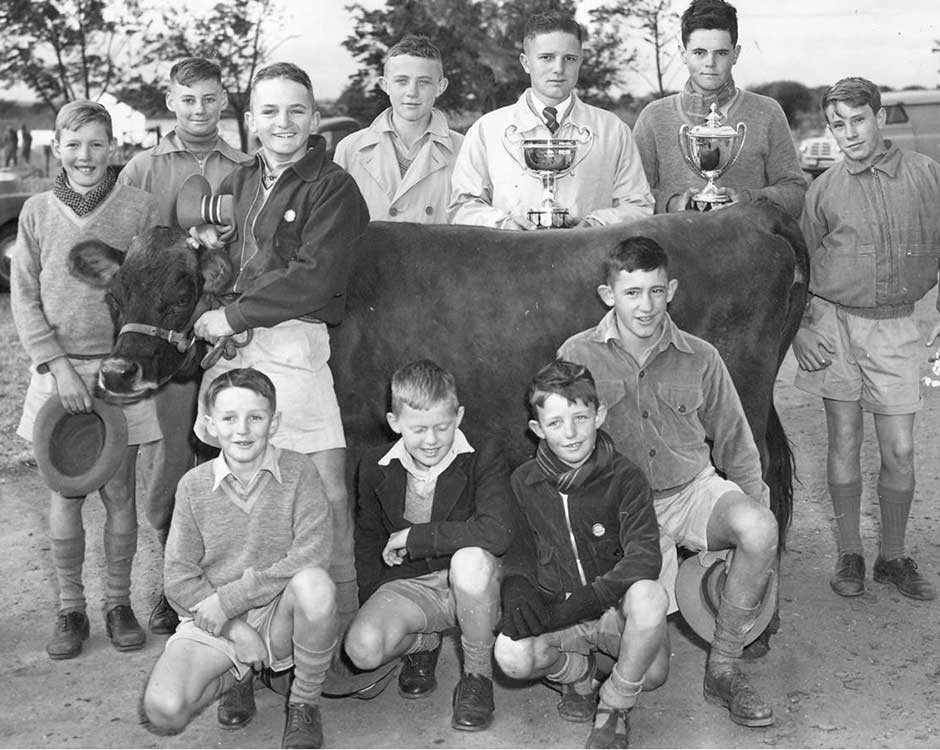
With members of the Young Farmer’s Club; Walker holding the cow’s halter (1955)
Before entering university I started to get interested in agriculture. I belonged to a Young Farmer's Club and we used to help the farmer look after his cattle and pigs. I became interested in how the farm worked and, following my father’s advice that "you should get a degree that will give you a good job" I got a degree in agriculture from Natal University in South Africa. I graduated in 1961 and came back to Rhodesia where I worked as an agricultural officer in the tribal areas, helping African farmers to improve their crop yields and the health and productivity of their livestock.
But after a few years I realized that I was more interested in the ecology of the region, its remaining wildlife and why the species of trees occurred where they did, why things occurred together and didn’t occur together, how they change and why they change. It was the ecology of the system that I wanted to understand. So I wrote all around to British Commonwealth countries applying for scholarships, and managed to get one from Canada, to do a degree at the University of Saskatchewan. After four years there I returned to Rhodesia with an M.Sc. and a Ph.D. in ecology.
I joined the University of Rhodesia and took on students to do research on savanna and wildlife ecology, all around Zimbabwe, in National Parks and other wildlife areas. In many of the remote areas there were not many good roads so I got a private pilot's license so I could fly myself around to visit the students. When I started to do that I realized the advantage of being able to see landscapes from the scale of a thousand feet above the ground. I could see patterns that I couldn’t see by driving, and could then go back and look at the ecology on the ground with a different perspective. They were very valuable experiences.
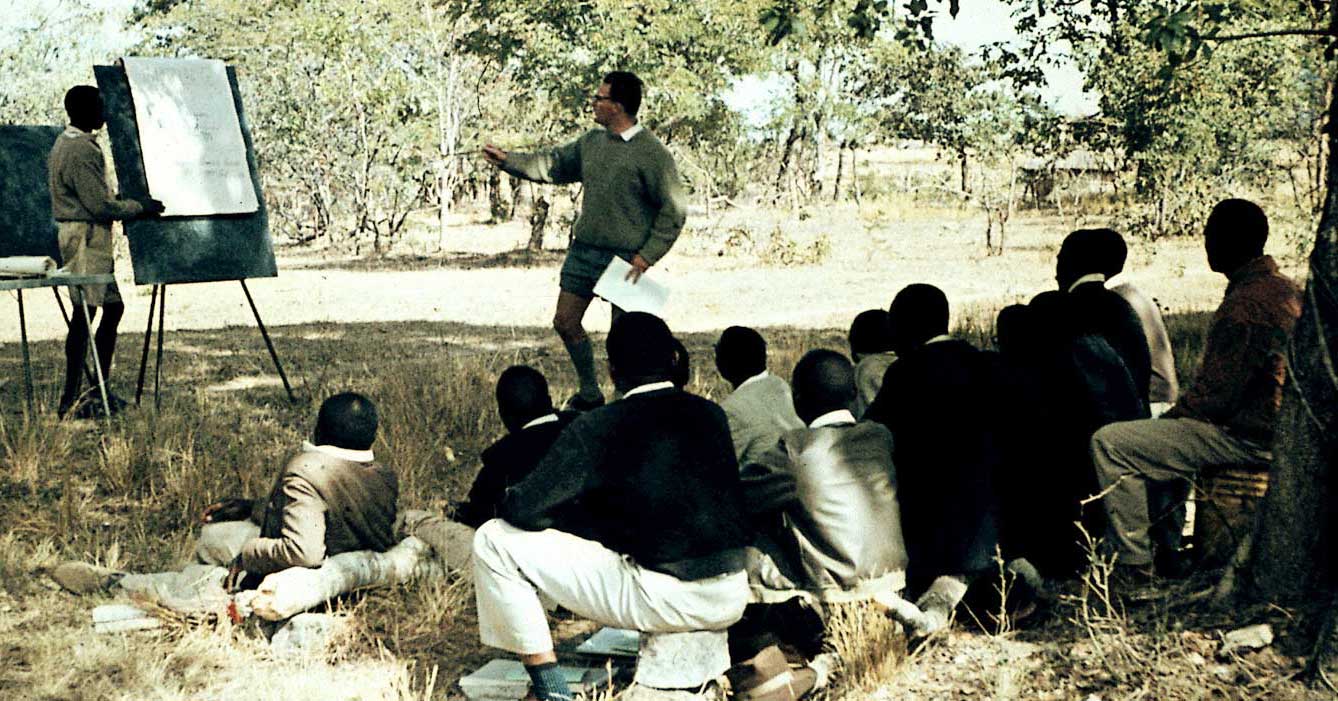
A workshop of agriculture in Zimbabwe (1962)
Leaving Rhodesia, going to South Africa, then to Australia
At that time, the political situation in Rhodesia had changed a lot from when I was young. The war for independence was very difficult for me. I was enlisted in the army for a while on a reserve basis. I could no longer go to a number of my research sites, particularly in the Zambesi Valley, because it was too dangerous. Then in 1975 I got a very good offer to become a professor at the University of the Witwatersrand in Johannesburg, to run a savanna program. I spent 10 years there, leading this savanna ecosystem program, and at the same time I led an international program of the International Council for Science on Responses of Savannas to Stress and Disturbance, in countries all around the tropics. It was through those connections that I was then asked to get involved with the International Geosphere-Biosphere Program.
In 1985 I got an offer from the CSIRO in Australia to become Chief of its Division of Wildlife and Ecology, so my family and I moved to Canberra. It was a very good move for me.
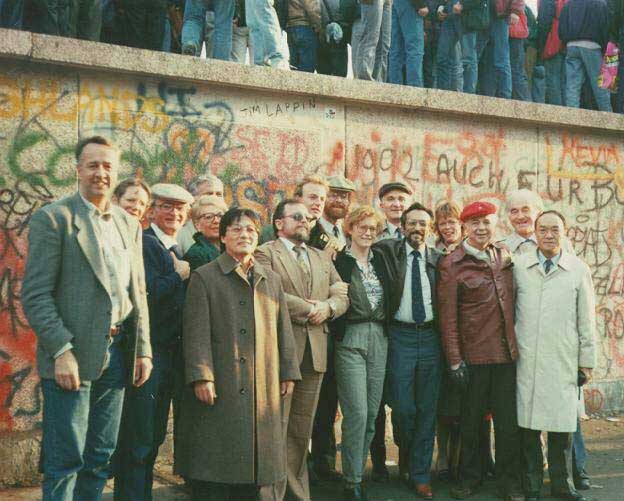
Walker (3rd from left) at the Berlin Wall on the day it “fell” during a Meeting of the International Council for Science
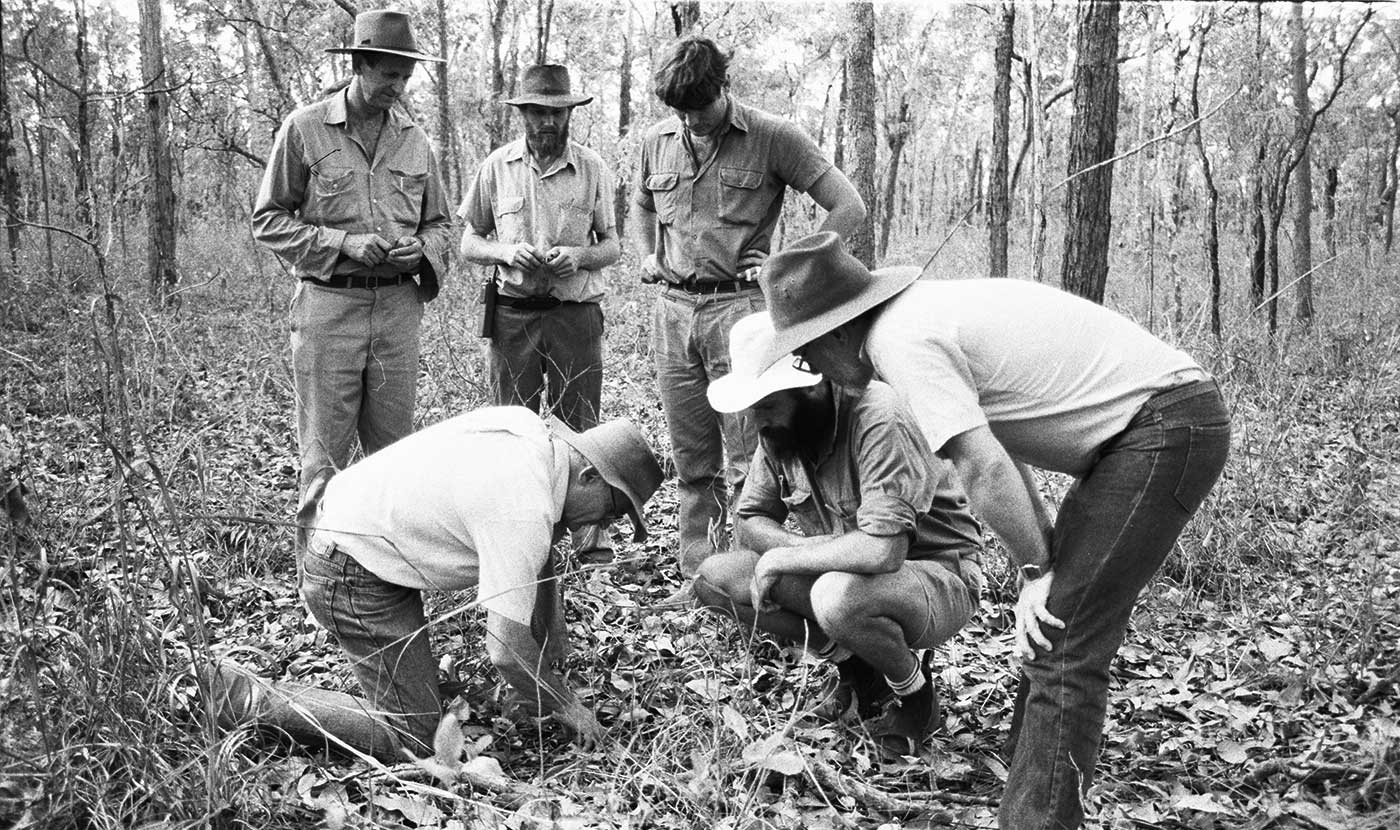
Inspecting soil surface with CSIRO scientists in a northern Australian savanna (1991)
A turning point in life
Encounter with Professor C.S. Holling and resilience
In 1974 I read a paper that give me a new insight into the science of ecology. It was written by Prof. C. S. (Buzz) Holling, of the Institute for Animal Resource Ecology at the University of British Columbia, in Vancouver. At the time, the theory behind ecology largely suggested that though changes happened in many ways they were reversible and the system could go back to how it was before being disturbed. But in fact, what my students and I were seeing was that ecosystems changed from one state to another and then generally couldn’t go back. What this was telling me was that these systems don’t operate smoothly. There are threshold effects, and you need to understand what causes them. Then I came across a paper by C. S. Holling that showed how these non-linear effects occur. It was an "Ah ha" moment for me, giving me a different perspective of how the systems work.
For instance, if you keep putting more and more cattle on a rangeland it begins to change. Some species will be lost and there is less and less grass. Up to some point if you take away the cattle the rangeland goes back to what it was like; it recovers. But beyond some rate of stocking cattle and loss of grass if you take away the cattle, the rangeland does not go back to how it was and keeps getting worse. That’s what is happening over much of sub-Sahara in Africa. Desertification, as it is known, has a threshold point in the amount of vegetation on the surface of the soil and when the cover is reduced to less than that it won't recover. How does this happen? There is a relationship between the amount of cover on soil and the amount of the rain that penetrates into the soil, and if you reduce the amount of grass cover below some critical amount of grass cover the amount of rainfall that runs off the soil instead of into it leads to insufficient soil water to maintain a grass cover; so it gets more and more like a desert.
Coming back to Holling’s paper, I wrote to him about what I was working on and he invited me to come and do a sabbatical year with him, and that’s how I got involved in resilience research. While doing this he formed a network of resilience scientists, which became known as The Resilience Network, with Holling as its Director. I’ll come back to this, but first we need to understand just what resilience is.
What is the resilience concept?
The simplest definition of resilience is the ability of a system cope with a shock, a disturbance, and keep functioning in the same kind of way — not cross a threshold into some other state of the system. A system can be your body, an ecosystem, an agricultural system, a fishery, etc. Being resilient is being able to keep your identity. A common depiction of resilience is the "ball in the basin" model. (See diagram)

The position of the ball (blue dot in the diagram) is the state of the system at one time, the basin is the set of all the possible states with the same identity, and the bottom of the basin is the "stable" state of the system, towards which the system tends to change. If you push the ball towards the edge of the basin, as long as it doesn’t cross the threshold, the system will tend to go back to its stable state if you stop pushing. But if the ball goes over the lip, either by moving the ball or by changing where the lip (threshold) is, then the ball will roll into another basin. The way you manage a system changes the size and shape of the basin, so we can think about resilience as the size of the basin of attraction.
A network of scientists all over the world
The Resilience Alliance
Professor Holling brought together an international group of scientists who were working with each other on resilience ideas, in savannas, lakes, forests, marshes, coral reefs — all kinds of ecosystems, to see if together we could understand the principles of resilience. And that was what led to the Resilience Network. After a few years Holling stepped down as Director, and when we got funding to become a registered research organization I took over as Chair of the Board of the "Resilience Alliance", as it became in 1999.
To give some flavour of the expertise in the group, some of the early core members of the Alliance were Professor Steve Carpenter and Professor Martin Scheffer both experts on lakes, Professor Carl Folke from the Beijer Institute of Ecological Economics, equally a natural scientist and an ecologist, Professor Lance Gunderson (who is now the current chair of the Board) an expert on the ecology of the Everglades, and Professor Terry Hughes, an expert on coral reefs around the world.
The goal of Resilience Alliance was to develop a better understanding of the complexity of how linked social-ecological systems function over time and how they respond to disturbances. We wanted to understand the feedbacks and processes that are interacting in the system to enable it to function in one kind of way or another. Most of the people who established the Resilience Alliance are now no longer active members and have become Fellows. And there is also now The Resilience Alliance Young Scholars, who will be taking over as the next generation of resilience research leaders - and I’m pleased to say that most of them are young women. A nice thing to see, because in the beginning we were very much a men's group.
Every one or two years The RA holds a resilience science meeting, preferably on a small island, and those meetings provide the opportunities for new collaborations and establishment of research programs.

Members of the Resilience Alliance at the 2007 meeting (I am in the front row, 4th from left)
A key question at the science meeting in Stockholm last year was "How can the world get from where we are to a more resilient system?". We have a new group of people, a new generation, who are taking resilience thinking into a new phase, and I find that very encouraging. Research on resilience has been underway for some thirty years now, and it features in many programs, like the new plans for the IPCC. The concept of resilience has become mainstream, and I think there has been wide acceptance of what it means.
"Social-ecological systems" - the integration of ecology and social science
As an ecologist, the complexity of social sciences and the way society works is very important for me. What can we do to make society resilient? Ecologists traditionally only look at ecosystems, whether it's a national park or a coral reef, or whatever. They understand how that system is working and to prevent undesirable changes in it they recommend changes in the way it is being used. But getting those changes made needs the expertise of social scientists. Understanding why people take the actions they do, is something that natural scientists don’t really think about. For example, an irrigation-agricultural system is made up of the ecosystem, the water system, the farming system and the social system, which consists of the irrigation farmers and also rural towns. So it's a social system as well as an ecological system, and the two interact as a combined system. I was fortunate in being able to learn about how to analyze these interactions, because in the Resilience Alliance we had some very good social scientists, giving us a much better understanding of the dynamics of linked social-ecological systems.
Human society and resilience
Importance of diversity
One of the most important attributes that confers resilience on a system is having a high diversity. In an ecosystem it is primarily the diversity of species. In a social system it might be the diversity of different kinds of employment. In an ecosystem there are two kinds of species diversity. One is the different kinds of species that perform different functions. For example, some species (legumes) perform the function of fixing nitrogen from the air, needed for all plants to grow and produce protein. Others produce seeds needed by animals, and so on. The other kind of diversity is having different species that perform the same function — like different kinds of legume species. And, importantly, they perform the function is somewhat different ways and have different responses to various kinds of disturbance. Some are able to cope better with droughts, others are resistant to certain plant diseases, others can tolerate frost better, and so on.
If you have only one species of legume and something like a disease or a drought kills all of that species, then the whole function of nitrogen is lost and the ecosystem will change dramatically. But if you have ten different species of legumes, all fixing nitrogen but all responding differently to different environmental disturbances, then whatever disturbance hits the system some of the legume species will most likely survive. So the system is resilient in terms of nitrogen fixation. This is response diversity, and it’s a hugely important part of being resilient.
I emphasize this because in today's world response diversity is considered to be redundancy. It’s unnecessary. Why do you need ten species? Just find the one that’s doing the job best and get rid of the others. "Redundancy" means inefficiency and is wasteful and costly. But in fact, if it is response diversity that is being wrongly considered as redundancy it will make the system very non-resilient. Maintaining and building response diversity is one of the most important ways build resilience.
Many attributes confer resilience in a system. One that’s important is having reserves. A person can have money reserves in a bank account, and that will give her resilience when the economy is changing. In an ecosystem having underground nutrient reserves in roots confers resilience during periods of drought. There are many other attributes, described in several books ("Resilience Thinking" by me and David Salt describes them in some detail).
The three elements of a high-resilient society
The crucial thing that distinguishes human society from all natural systems is the deliberate intention of people. Humans think and plan ahead and one thing that is plain from studies of many societies is that humans, in general, don’t like change, and deliberately avoid change when they can. It’s a major problem today because there is a pressing need for transformational changes in many aspects of society and in the ways we are using our world, but too many people are in a state of denial that such change is needed. Climate deniers are the classic example. They don’t want to think about and deal with climate change because the short-term costs of doing something about it are too high. So they deny it , and keep doing the same things.
There are three elements of resilience that need to be understood and acted on in order to achieve a sustainable future. The first is the existence of thresholds, in virtually all complex systems, and the need to understand them (the ball-in-the-basin model). The second element is adaptive capacity, which is basically how to deal with the thresholds - either learning how to avoid crossing the threshold, or if possible moving it (making the "safe" space of the system bigger).
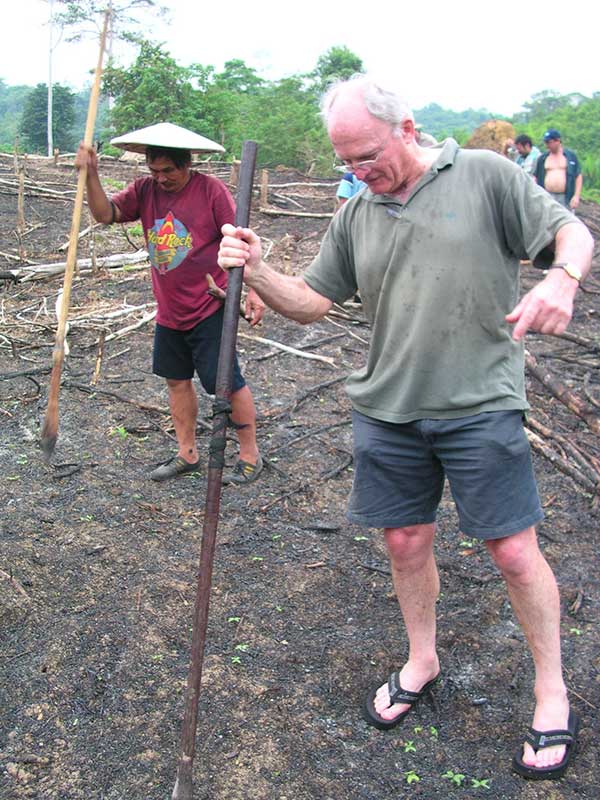
Learning how to plant rice in Indonesia (2000)
The third one is transformability. When it’s no longer possible to avoid crossing an undesirable threshold, or if one has already been crossed, then the only option is to transform into a different kind of system. It has to become some other kind of system. And transformation is painful; no-one likes or wants it. However, all over the world there is a need for transformational change, and therefore for building transformability — the capacity to undertake a transformation.
The world is in a very difficult position right now. Many regions are experiencing disturbances they've never had before, like different climate regimes, new pests and new diseases. All ecosystems and societies evolve under a particular disturbance regime. And they become resilient to that regime in all sorts of ways. If the disturbance regime changes then the system has to adapt and evolve. If it changes too fast the system can't do that - and that's the big worry about the future. Environmental regimes are changing very fast, and we can't just keep doing the same things that we have been doing, and still are doing.
Because it’s not possible to come up with a reliable prediction of just what the future environment and disturbance regimes will be, it’s not possible to come up with a reliable prescription for just what to do. The only way to deal with this is to try to increase the ability of the system to self-adjust, to self-organize, to build general resilience - the capacity to absorb a disturbance and then reorganize so as to keep functioning in the same kind of way. You make the system as resilient as it can be to all kinds of disturbances and change.
Hope for the future
We need transformational change, and based on historical evidence this will require a crisis. Avoiding an undesirable transformation will need understanding of possible futures and how various interventions might play out. It will need a lot of collaboration and cooperation between scientists, industry, society and governments. If we don’t get that we really don’t have a very optimistic future. If we can be prepared for the changes we need, we can perhaps use a big crisis, or a series of crises, to make the changes. Without the stimulus of the crisis those in power will stay in their state of denial.
There is a growing awareness in the younger generation that change is necessary, and that it could be exciting. They are not in denial, and they have the energy and motivation to make change happen. My hope lies in them.